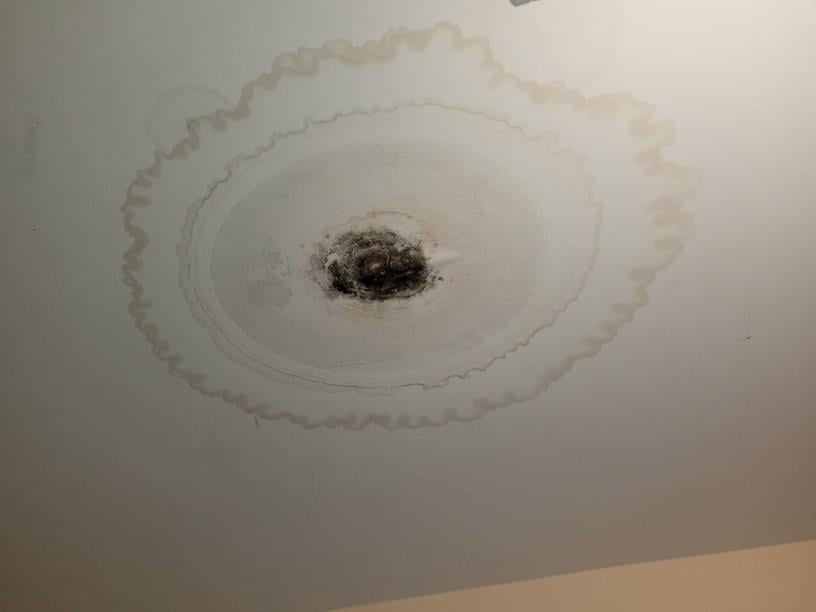Reveal Concealed Water Line Leaks: Six Tested Finding Methods
Reveal Concealed Water Line Leaks: Six Tested Finding Methods
Blog Article
We've come across this post relating to Hacks to detect leaks down the page on the web and accepted it made good sense to talk about it with you on this site.

Early detection of dripping water lines can reduce a potential catastrophe. Apart from saving you cash, it will certainly lessen the aggravation as well as stress. The moment you find a leakage, calling your plumber for repair work is the most effective solution. However, some tiny water leaks may not show up. Below are some hacks that assist if you can not find it with your naked eyes.
1. Take A Look At the Water Meter
Every residence has a water meter. Inspecting it is a guaranteed way that helps you find leaks. For starters, turn off all the water sources. Ensure no one will purge, utilize the faucet, shower, run the washing maker or dish washer. From there, go to the meter and watch if it will certainly alter. Given that no one is utilizing it, there ought to be no activities. If it moves, that indicates a fast-moving leak. If you spot no adjustments, wait an hour or two and also examine back once more. This suggests you may have a slow leakage that can also be below ground.
2. Examine Water Usage
If you find abrupt modifications, in spite of your usage being the same, it implies that you have leaks in your plumbing system. An unexpected spike in your costs suggests a fast-moving leak.
Meanwhile, a steady rise each month, even with the very same routines, shows you have a slow leakage that's likewise slowly intensifying. Call a plumber to completely examine your residential or commercial property, specifically if you feel a cozy area on your flooring with piping beneath.
3. Do a Food Coloring Examination
When it comes to water usage, 30% comes from commodes. If the color somehow infiltrates your bowl throughout that time without flushing, there's a leakage between the tank and bowl.
4. Asses Outside Lines
Do not forget to inspect your outside water lines also. Test faucets by affixing a yard hose. Ought to water leak out of the link, you have a loosened rubber gasket. Replace this and make sure all connections are limited. It will certainly assist obtain it professionally examined as well as kept each year if you've obtained a sprinkler system. One small leak can lose lots of water and also spike your water bill.
5. Assess the scenario and also examine
Property owners ought to make it a practice to check under the sink counters and also inside closets for any type of bad odor or mold and mildew growth. These 2 warnings suggest a leak so prompt focus is needed. Doing routine evaluations, even bi-annually, can conserve you from a major problem.
Check for stainings and deteriorating as many pipelines and home appliances have a life expectations. If you think dripping water lines in your plumbing system, don't wait for it to intensify.
Early discovery of leaking water lines can minimize a potential calamity. Some small water leaks may not be noticeable. Checking it is a guaranteed means that aids you discover leakages. One little leakage can lose lots of water and surge your water costs.
If you suspect leaking water lines in your plumbing system, do not wait for it to rise.
How to Know If Your Home Has a Hidden Leak
Water Meter Reveals Inexplicable Water Usage
If you’d like to test whether or not there’s a leak somewhere in your home, you can do this using your water meter. Here is how to conduct the test:
Don’t use any water in your home for at least 30 minutes; this also means not turning on faucets or water-using appliances.
Go outside, and check your water meter for activity.
If your water meter shows that there was activity, even though no one was using any water, this proves that there is a leak in your home.Visible Mold or Mildew Growth
Leaks behind walls create moist, dark environments that allow mold and mildew to grow and thrive. Eventually, you might see mold growth forming on the wall closest to a hidden leak.
If mold is growing in an area that receives a high amount of moisture, such as a bathroom, it may simply be an indication that better ventilation is needed. However, if you see mold growth on a wall or the ceiling in an area where you would not expect, you probably have a hidden leak.
Musty, Mildew Odor
Sometimes you might not be able to see the mold or mildew that is growing as a result of a leak. However, the smell can give the problem away just as easily. If you catch a whiff of something musty, there’s a good chance that old water is collecting somewhere in your home that you can’t see.
Stained/Warped Walls, Ceilings, or Floors
When your home soaks up water, a variety of red flags can become visible, including ceiling stains, bubbling drywall, warped walls, and sagging floors. While these issues can be caused by excess humidity, they can also be signs that a pipe or plumbing connection has started leaking behind your walls.
Inexplicably High Water Bill
After a while, you get a general sense for what your water bill should be. If you own a pool or sprinkler system, your bill will tend to be higher during summer. However, if you receive a water bill that seems especially high, and you can’t figure out what caused it, then you may have a hidden leak somewhere that’s increasing your bill.
https://www.plumbingjoint.com/blog/2019/july/how-to-know-if-your-home-has-a-hidden-leak/

I'm certainly very interested in Finding hidden leaks and I'm hoping you enjoyed our entry. Enjoyed reading our piece? Please share it. Let someone else discover it. Thanks a bunch for your time. Come back soon.
Hot water issues? Report this page